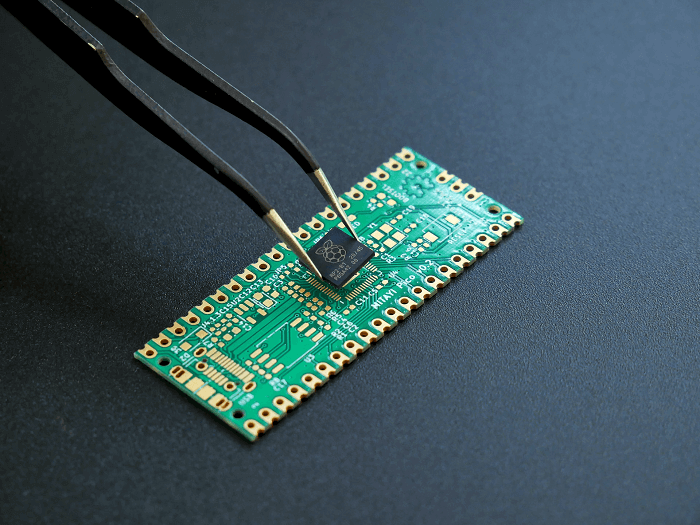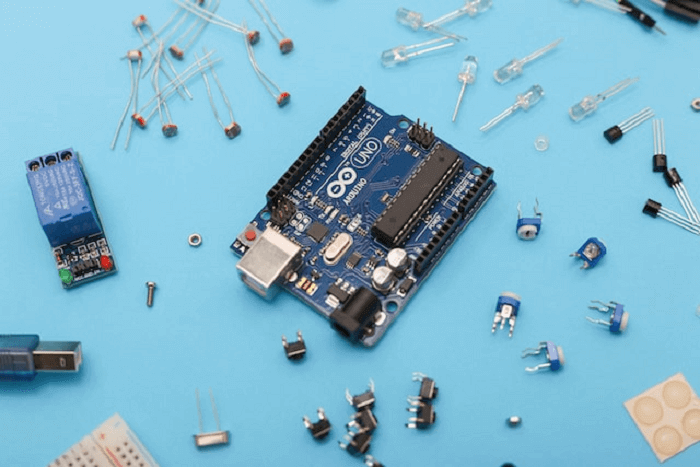Microcontroller DefinitionA Microcontroller is a small, programmable computer chip that controls specific tasks within an electronic device. It is a type of microprocessor, but unlike a general-purpose microprocessor, a microcontroller is specifically designed for embedded systems, which are computer systems that are integrated into other devices and perform a specific function. Microcontrollers typically contain a CPU (central processing unit), memory (both RAM and ROM), and input/output peripherals such as timers, counters, and Analog-to-digital converters. They are programmed using specialized software tools, and the code is typically stored in non-volatile memory, such as flash memory or EEPROM. Microcontrollers are used in various electronic devices, ranging from simple appliances such as microwave ovens and washing machines to more complex devices such as automobiles and industrial control systems. They are also commonly used in consumer electronics such as smartphones, tablets, and gaming consoles. Microcontrollers have a special type of memory that stores the microcontroller's instructions given by the programmer, making it very easy to recreate the codes multiple times. 
Internal Arch for MicrocontrollerThe microcontroller is the combination of the hardware as well as software that allows the phase to receive, process and execute the system input signals which than performs the computations and it also instructs to control the output signals. If we go deeper into the system microcontroller in hardware the components includes central processing unit (CPU), memory, I/O Portsand lots of other peripherals such as timers, analog to digital converters (ADC) and various communications interfaces. So the software is designed to control the the operations of microcontroller and the program or the software is stored in memory of the microcontroller. So discussing specifically

The small size and low price of microcontrollers are two of its key benefits. They are perfect for use in items with limited space since they can complete complicated functions in a compact container, like small consumer electronics. Furthermore, microcontrollers are now more affordable than ever and may be used in various applications. The microcontroller can also be customized for various programmers needs the software that also controls the operations of the microcontroller and the software for the instruction runner can be designed in various coding language allowing them to have a high flexibility in the designing and functionality to the system. Microcontroller ApplicationsMicrocontrollers are frequently found in consumer electronics, including smartphones, smart watches, digital cameras, and gaming consoles.
The capabilities of microcontrollers are growing as technology develops. Modern microcontrollers are better suited for usage in a wider range of applications because they can handle more complicated tasks and process larger amounts of data. The Internet of Things was also made possible by advancements in wireless communication and sensor technologies, connecting microcontrollers to the web and other devices. Instruction Phase in Microcontroller
What is the Need for a Microcontroller?The microcontroller was created because of the ability to create smaller, more effective computers as technology advanced. Microcontrollers can be found in a wide variety of modern gadgets, from home appliances to medical technology, cars, and even space rockets. The microcontroller's adaptability and flexibility are one of its main benefits. It can be programmed to carry out a wide range of operations, from straightforward Athematic operations to complex data processing and control operations. This makes it the perfect option for numerous applications requiring a trimmed solution. Another distinctive feature is the microcontroller's capacity to communicate with other components and systems. It can interact with the physical world in a variety of ways thanks to its ability to interface with cameras, actuators, displays, and other peripherals. Advantages of Microcontroller
Disadvantages of Microcontroller
The Working of MicrocontrollersThree primary parts make up a microcontroller's fundamental design: A CPU, memory, and input/output (I/O) ports. The microcontroller's processor serves as its brain and oversees carrying out commands. The program code and data that the processor needs to operate are stored in the memory. The microcontroller can communicate with external components like sensors and actuators thanks to its I/O ports. A microcontroller loads its programme code from memory and begins executing commands when it is powered on. These instructions could include reading data from sensors, processing the data, and then using the I/O ports to operate external devices. Using communication protocols like UART, SPI, or I2C, the microcontroller may communicate with other devices, such as a computer or a network.
Next TopicMorphology definition
|
 For Videos Join Our Youtube Channel: Join Now
For Videos Join Our Youtube Channel: Join Now
Feedback
- Send your Feedback to [email protected]
Help Others, Please Share










